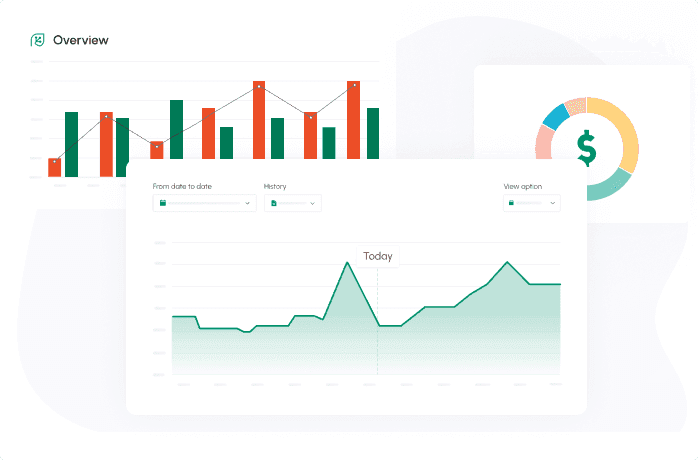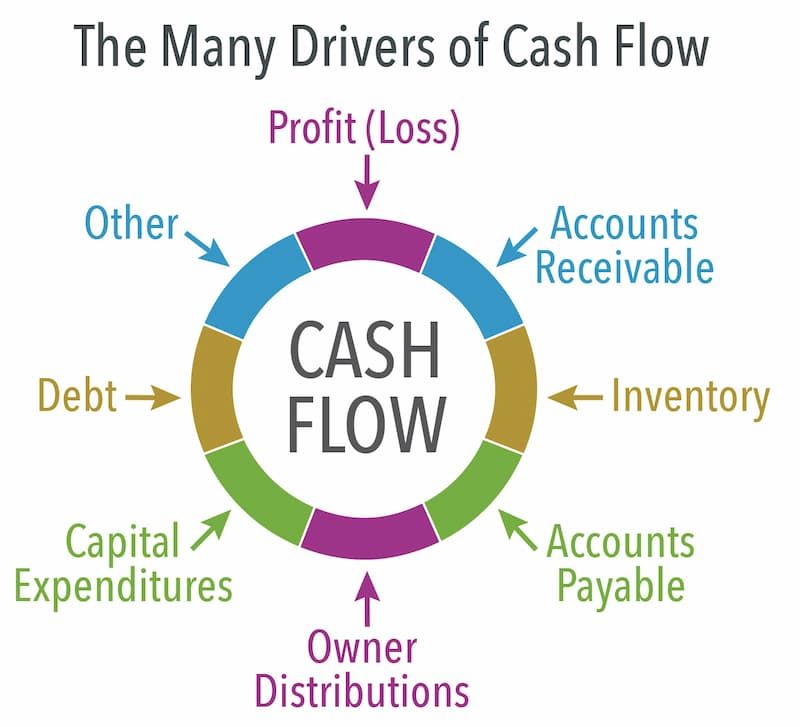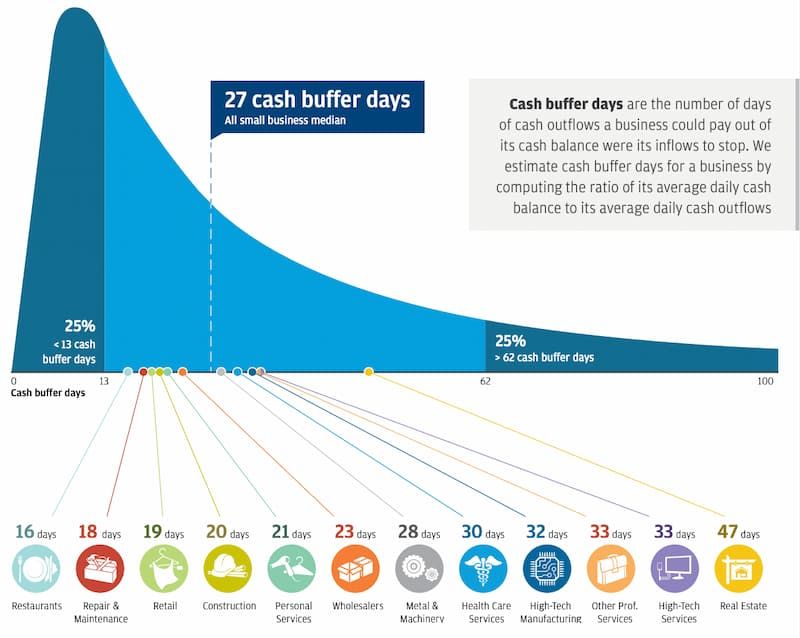10 Most Common Mistakes in Cash Flow Management

Cash flow is the heartbeat of any business.
Without it, you're stuck—unable to pay employees, cover bills, or invest in growth. Yet, many businesses struggle with cash flow, often due to avoidable mistakes.
This isn’t just a list of business theory.
You're in the right place if you're dealing with cash flow problems or just want to avoid them. In this article, we'll walk through the most common cash flow issues in business—and solutions to cash flow problems that can help you sidestep them. These are the actual cash flow problems in business that hit owners where it hurts, and more importantly—how to solve cash flow problems.
But the good news? You can fix them, and we’re going to show you how.
Mistake #1: Not Monitoring Cash Flow Regularly
If you’re not checking your cash flow, you're setting yourself up for disaster. It's your business's lifeblood; without regularly tracking it, you're driving blindfolded.
Why Regular Monitoring Matters
You wouldn’t let your car run low on gas without checking the gauge, right?
Same goes for your business. If you don’t check your cash flow regularly, you risk running out of money when you need it most. Early warnings let you make smarter decisions—when to hold back, when to invest, and when to get creative.
Imagine getting blindsided by a sudden cash flow problem. That’s the kind of nightmare that could’ve been avoided if you’d been on top of it.
Simple Tools to Track Cash Flow
You don’t need to possess a CPA certification to monitor your company's cash flow problems since simple accounting tools exist for tracking purposes.
The accounting tools such as QuickBooks, FreshBooks, and Xero allow you to automate most of your work.
Set regular check-in sessions that run weekly or bi-weekly and maintain this schedule.
You’ll be amazed at how much easier it is to spot cash flow issues in business early on.
Mistake #2: Overestimating Future Sales
It’s easy to get excited about the future, but basing your plans on hopeful projections can be a huge pitfall. Overestimating sales can lead to overspending—and that’s how you run into cash flow challenges.
Why Overestimating Sales Hurts
We have surely dreamed about huge sales growth, but hoping by itself does not amount to an effective plan. Your overestimations of projected growth can lead to unfavorable outcomes since actual sales numbers may fall short of your expectations. Due to this approach, your company will have limited funds, which might create difficulties in handling expenses, or new recruitment or market expansion plans.
Especially in fast-growing businesses, there is high pressure to scale operations, making judgment difficult.
How to Get Sales Projections Right
Instead of guessing, look to the past. Past performance gives you solid data, and even with growth, you can make more conservative projections. And factor in external factors like market conditions, customer behavior, or supply chain disruptions. By being realistic, you’ll avoid common cash flow problems that arise from underestimating your financial needs.
Mistake #3: Ignoring Accounts Receivable
 Photos from Financial Rhythm
Photos from Financial Rhythm
When your clients don’t pay on time, you’re stuck. Those unpaid invoices aren’t “income” until they hit your bank account. And when they stay unpaid for too long, it throws a wrench in your whole financial system.
Why Unpaid Invoices Matter
Not paying invoices creates a serious problem since they are more than inconvenient.
The consequence of not tracking your invoices will lead to difficulties in paying personal expenses and employee wages. Your business operations can quickly sink into financial trouble since you begin withdrawing from savings and accepting debt to resume operations.
This is one of the most common cash flow problems in business.
Tips for Better Receivables Management
Get strict about payment terms, and don’t let clients get away with delays.
You should use Zoho or FreshBooks to handle automated invoicing and scheduled follow-ups. Early payment discounts and late payment fees should be employed as strategies to help customers pay their invoices swiftly.
Taking control of accounts receivable enables you to handle cash flow problems effectively.
Mistake #4: Poor Inventory Management
 Photos from 4 Common Cash Flow Problems And Its Causes - Velotrade
Photos from 4 Common Cash Flow Problems And Its Causes - Velotrade
The practice of maintaining excessive inventory and keeping unsold products removes available funds from your operational network. Your cash availability is limited by unsold merchandise since you need it available for other uses.
How Extra Inventory Hurts Your Cash Flow
Holding onto inventory costs more than just what you paid for it. You’ve got storage costs, insurance, and possibly spoilage if you deal in perishables. If the stock’s not moving, all that cash is just sitting there, which leaves you less room to respond to actual opportunities.
Better Inventory Management
Keep track of stock closely.
TradeGecko and NetSuite provide software solutions to show exactly which products sell and which don’t. A JIT system enables you to make orders only when new demand emerges Avoiding cash flow problems both waste and storage expenses.
Maintaining good cash flow can be resolved by planning stock levels more effectively.
Mistake #5: Inadequate Expense Tracking
Ignoring small expenses is like leaking cash without realizing it. Subscriptions, office supplies, and utilities may seem small, but they add up fast.
Common Expense Tracking Mistakes
Your business cash flow can easily get damaged by steady expenses which escape your monitoring system.
Placing no attention on regular expenses leads to four problems: missing bills and inadequate funding for unplanned costs. Business cash flow problems primarily develop from expenses that business owners forget to track until the costs accumulate.
How to Manage Expenses Better
Develop a routine to examine every expenditure, including the minor ones.
The software applications Expensify and Mint help users to monitor their financial activities effectively. Regular subscription review enables you to find opportunities to cut costs.
One minor adjustment has the potential to generate major savings, which prevents potential future financial problems in your business.
Mistake #6: Failing to Plan for Seasonal Variations
| Category | Subcategory | Key Factors |
|---|---|---|
| Revenue Growth | Volume |
|
| Price |
| |
| Operating Margin | COGS |
|
| SG&A |
| |
| Capital Efficiency | PP&E |
|
| Inventory |
|
If you run a seasonal business, ignoring the off-season is a huge mistake. You can’t just “wait for the busy season” and hope everything will be okay.
Understanding Seasonal Cash Flow
The slow months can be brutal. Without planning ahead, you might find yourself scrambling to make ends meet. Understanding when your slow periods will hit lets you prepare by saving during the busy months.
Planning for the Slow Seasons
Build cash reserves during peak season. Cut all expenses that are not necessary in your off-season while developing new products or services, which can generate revenue throughout the entire year. Your understanding of seasonal market patterns enables you to prevent cash flow difficulties that occur during slow business periods.
Mistake #7: Neglecting to Build a Cash Reserve
Operating without a cash cushion is risky. Unexpected setbacks—whether from slow sales or emergencies—can quickly turn into financial chaos if you don’t have a reserve.
Why You Need a Cash Reserve
Having a cushion for unexpected expenses is like having an emergency fund for your business. It keeps you from relying on credit or loans when things get tight. Without it, you’re vulnerable to even the slightest setback.
How to Build a Cash Reserve
Set aside a portion of profits each month. Aim to build a reserve covering three to six months of operating costs. Start slow if you need to, but make it a priority. That buffer can make all the difference when life throws you a curveball and help you avoid serious company cash flow problems.
Mistake #8: Not Managing Debt Effectively
Debt can be a helpful tool, but it becomes a significant drain on your cash flow if it's not managed well.
The Problems with Poor Debt Management
If you’re carrying high-interest debt or missing payments, you're digging yourself into a deeper hole. High-interest rates and late fees make it harder to keep your cash flow positive. Causes of cash flow problems often stem from not managing debt correctly.
How to Manage Debt Better
Make a payment plan where you tackle debts with the highest interest rates first. You should explore options to combine or refinance your outstanding debt for better interest rates.
Track your debt-to-equity ratio because it maintains financial balance. Whenever you find it too hard to control your debt, ask experts for assistance to handle responsibilities and overcome monetary flow challenges.
Mistake #9: Underestimating Expenses
It’s easy to focus on revenue, but overlooking all the costs can leave you blindsided when it’s time to pay up.
Why Underestimating Costs Hurts
The absence of comprehensive tracking of expenses produces cash flow shortages for your business. Not expecting all expenses can rapidly use up your operating reserves, thereby forcing you to seek cash during critical moments.
How to Budget Better
Write a financial plan incorporating fixed administrative costs (building rent and employee pay) and adjustable expenses (raw material bills and occasional employment payments). Regular budget updates along with close financial observation will maintain your readiness. Working with a budget prevents significant problems in cash flow from rising up.
Mistake #10: Lack of Professional Financial Advice
 Photo from Shutterstock
Photo from Shutterstock
Your independent control of all tasks frequently results in bearable monetary mistakes. Business owners without professional guidance often fail to notice significant financial strategies which prove vital for their revenue growth.
Why You Need a Financial Advisor
A financial advisor helps you make smart, informed tax, cash flow, and investment decisions. They can guide you through complex financial situations and help you avoid costly mistakes. Having a trusted advisor can also help you plan for long-term growth and avoid common cash flow problems.
How to Find the Right Advisor
Look for an advisor who specializes in small business finance and has experience with companies like yours. Don't just go with the cheapest option—find someone who understands your goals and can help guide you through to cash flow problems and solutions.
Final Thoughts
Cash flow is the lifeblood of any business, yet so many owners fail to recognize the critical mistakes sabotaging their financial stability. The truth? These mistakes are often preventable with the proper knowledge and strategy.
By now, you’ve learned the top 10 cash flow mistakes that could hold your business back. Armed with this insight, it’s time to take action—before these issues spiral out of control. With practical steps and proven techniques, you can turn your cash flow situation around and protect the future of your business.
Don’t wait for things to worsen.
What’s your experience with cash flow? Share your thoughts below.

Cash Flow Forecasting Template
Read more

Your Guide To Financial Metrics And KPIs
Read more

10 Cash Management Trends for 2026
Read more

10 Best Cash Flow Business Ideas: Build Income That Counts
Read more

Direct vs Indirect Cash Flow - Which Method Fits Your Business Better?
Read more

Best Practices for Cash Flow Forecasting That Actually Work
Read more
FAQ
Trusted by thousands of business owners
Start Free Trial Now